The Antichrist’s church of the last days is called “Babylon the great,” but Mystery Babylon is the name that’s stuck. After two thousand years, scholars still can’t agree on what it represents. Here’s what we know: The Babylon of John’s vision is a religion and a city. Ezekiel gave us important clues that modern prophecy scholars have missed because they haven’t considered the history and religion of the people who lived in the ancient Near East.
Chapter 27 of Ezekiel is a lament over the city of Tyre. The great trading city was founded by the Phoenician descendants of Amorites who settled along the eastern shore of the Mediterranean. This lament has a clear parallel in Revelation. It not only cements the connection between the visions of Ezekiel and John, it shows that the iniquity of the Amorites is still with us.
The word of the Lord came to me: “Now you, son of man, raise a lamentation over Tyre, and say to Tyre, who dwells at the entrances to the sea, merchant of the peoples to many coastlands, thus says the Lord God:
“O Tyre, you have said,
‘I am perfect in beauty.’
Your borders are in the heart of the seas;
your builders made perfect your beauty.
They made all your planks
of fir trees from Senir;
they took a cedar from Lebanon
to make a mast for you.
Of oaks of Bashan
they made your oars;
they made your deck of pines
from the coasts of Cyprus,
inlaid with ivory.” (Ezekiel 27:1–6, ESV, emphasis added)
Tyre was the most powerful commercial empire in the Mediterranean for centuries. Even after the city’s influence began to fade, its colony in north Africa, Carthage, grew so powerful that its most famous general, Hannibal, nearly destroyed Rome. At the peak of Tyre’s power, in Ezekiel’s day, the prophet linked the strength of Tyre, its ships, to Mount Hermon and Bashan.
Senir was the Amorite name for Hermon, the mount of assembly ruled by “the” god of the western Amorites, El. But the Amorites were history by Ezekiel’s day, at least under the name “Amorite.” Their lands were ruled by their descendants, the Arameans, Phoenicians, and Arabs, by the time of King David, about four hundred years before Ezekiel. So, why did the prophet use the archaic name for the mountain?
Ezekiel deliberately linked Tyre to the region’s spiritual wickedness in the minds of his readers. Not only was Senir/Hermon the abode of El, where the Rephaim spirits came to feast, it towered over Bashan, the entrance to the netherworld. By calling the mountain Senir instead of Hermon, Ezekiel specifically connected Tyre to the Amorites, whose evil was legendary among Jews.
As we noted early in the book, Babylon was founded by Amorites. Descendants of Amorites, the Phoenicians, made Tyre the foremost commercial empire of the ancient world. The link between Tyre and Mystery Babylon is the lament over its destruction:
At the sound of the cry of your pilots
the countryside shakes,
and down from their ships
come all who handle the oar.
The mariners and all the pilots of the sea
stand on the land
and shout aloud over you
and cry out bitterly.
They cast dust on their heads
and wallow in ashes;
they make themselves bald for you
and put sackcloth on their waist,
and they weep over you in bitterness of soul,
with bitter mourning.
In their wailing they raise a lamentation for you
and lament over you:
“Who is like Tyre,
like one destroyed in the midst of the sea?
When your wares came from the seas,
you satisfied many peoples;
with your abundant wealth and merchandise
you enriched the kings of the earth.
Now you are wrecked by the seas,
in the depths of the waters;
your merchandise and all your crew in your midst
have sunk with you.
All the inhabitants of the coastlands
are appalled at you,
and the hair of their kings bristles with horror;
their faces are convulsed.
The merchants among the peoples hiss at you;
you have come to a dreadful end
and shall be no more forever.” (Ezekiel 27:28–36, ESV)
Now, compare that section of Ezekiel’s lament over Tyre to John’s prophecy of the destruction of Babylon the Great in Revelation 18.
After this I saw another angel coming down from heaven, having great authority, and the earth was made bright with his glory. And he called out with a mighty voice,
“Fallen, fallen is Babylon the great!
She has become a dwelling place for demons,
a haunt for every unclean spirit,
a haunt for every unclean bird,
a haunt for every unclean and detestable beast….
And the kings of the earth, who committed sexual immorality and lived in luxury with her, will weep and wail over her when they see the smoke of her burning. They will stand far off, in fear of her torment, and say,
“Alas! Alas! You great city,
you mighty city, Babylon!
For in a single hour your judgment has come.”…
The merchants of these wares, who gained wealth from her, will stand far off, in fear of her torment, weeping and mourning aloud,
“Alas, alas, for the great city
that was clothed in fine linen,
in purple and scarlet,
adorned with gold,
with jewels, and with pearls!
For in a single hour all this wealth has been laid waste.”
And all shipmasters and seafaring men, sailors and all whose trade is on the sea, stood far off and cried out as they saw the smoke of her burning,
“What city was like the great city?”
And they threw dust on their heads as they wept and mourned, crying out,
“Alas, alas, for the great city
where all who had ships at sea
grew rich by her wealth!
For in a single hour she has been laid waste. (Revelation 18:1–2, 9, 15–19, ESV)
Let’s compare some key phrases from these chapters.
| Tyre (Ezekiel 27) | Babylon (Revelation 18) |
| “enriched the kings of the earth” (Ezekiel 27:33) | “kings of the earth…lived in luxury with her” (Revelation 18:9) |
| Lamented by mariners, pilots of the sea, merchants, and kings (Ezekiel 27:28–36) | Lamented by kings, merchants, shipmasters, and seafaring men (Revelation 18:9–19) |
| “‘Who is like Tyre, like one destroyed in the midst of the sea? …with your abundant wealth and merchandise you enriched the kings of the earth.’” (Ezekiel 27:32–33) | “‘What city was like the great city…where all who had ships at sea grew rich by her wealth!’” (Revelation 18:18–19) |
The parallels here have been noted by Bible scholars for generations. What I propose is that this connection points to the spiritual source of this global end-times religion—the gods of the Amorites, who joined forces as the directors of Allah, Inc.
By extension, then, it also points to the city that this religion calls home—Mecca.
When God made His covenant with Abraham in Genesis 15, He told the patriarch that his descendants would spend about four hundred years in a land that wasn’t theirs, “for the iniquity of the Amorites is not yet complete.” Ezekiel gave us the clues. He pointed to Mount Hermon, Bashan, and the neighbors of ancient Israel who worshiped the gods who called that region home.
Who, what, or where is Babylon the Great of Revelation 17 and 18? The connection between Mystery Babylon and the Amorites is key. Spiritual wickedness, symbolized by the Amorite kingdom of Babylon, connected to an unparalleled maritime trading empire are the two main features of Mystery Babylon.
Then one of the seven angels who had the seven bowls came and said to me, “Come, I will show you the judgment of the great prostitute who is seated on many waters, with whom the kings of the earth have committed sexual immorality, and with the wine of whose sexual immorality the dwellers on earth have become drunk.” And he carried me away in the Spirit into a wilderness, and I saw a woman sitting on a scarlet beast that was full of blasphemous names, and it had seven heads and ten horns. The woman was arrayed in purple and scarlet, and adorned with gold and jewels and pearls, holding in her hand a golden cup full of abominations and the impurities of her sexual immorality. And on her forehead was written a name of mystery: “Babylon the great, mother of prostitutes and of earth’s abominations.” And I saw the woman, drunk with the blood of the saints, the blood of the martyrs of Jesus.…
This calls for a mind with wisdom: the seven heads are seven mountains on which the woman is seated; they are also seven kings, five of whom have fallen, one is, the other has not yet come, and when he does come he must remain only a little while. (Revelation 17:1–6, 9–10, ESV)
As you see, there are other characteristics. “Sexual immorality” is a euphemism for spiritual rebellion, like Israel’s “whorings” with the gods of the pagan nations against which the prophets of the Old Testament thundered.
Geography is another, but a location on seven mountains or hills is one of the easiest for potential candidates to meet. While Rome is the first name most people think of, it appears to be a status symbol for a city to claim that it, too, was built on seven hills. Other cities ostensibly sitting on seven hills include Mecca, Jerusalem, Brussels, Tehran, Istanbul, Moscow, and dozens of others.
Joel Richardson made a strong case for Mecca in his 2017 book Mystery Babylon. He argues that no other city on the earth has influenced world leaders over the last century like Mecca, home of Islam’s holiest site. The vast wealth accumulated by the House of Saud over the last century has enabled it to bend bankers, academics, and politicians to their will, using petrodollars to draw the West into Mecca’s orbit. Until very recently, OPEC nations, led by Saudi Arabia, dominated world oil markets, with about forty percent of that black gold delivered to end users by ocean-going tankers.
Some argue that OPEC’s declining influence with the recent surge in American oil production means the Mecca-as-Mystery Babylon theory is flawed. On the contrary, it suggests that even as Islam grows, the Saudis themselves are not indispensable to the global economy. And since the Antichrist and his minions turn on Mystery Babylon, we know that the spirits behind Allah, Inc., consider the “great prostitute” expendable. While the scarlet woman of Revelation 17 has “dominion over the kings of the earth,” she’s resented by the ten principal kings represented by the ten horns on the beast. They and the beast “hate” her, and so they “devour her flesh and burn her up with fire.”
The faithful followers of Muhammad won’t know what hit them.
It’s tragic irony. The ultimate end of Mystery Babylon is to be slaughtered and served up as a sacrifice for the Beast from the Abyss—just like the thousands upon thousands of children who were passed through the fire and buried in the tophets of the ancient world.
Mystery Babylon—Mecca—will be destroyed in the war that brings the Antichrist to power; a war that sacrifices an entire religion in a diabolical double-cross to lure Jews (and Christians, if the church is still on the earth) into worshiping the Man of Sin.

Derek Gilbert Bio
Derek P. Gilbert hosts SkyWatchTV, a Christian television program that airs on several national networks, the long-running interview podcast A View from the Bunker, and co-hosts SciFriday, a weekly television program that analyzes science news with his wife, author Sharon K. Gilbert.
Before joining SkyWatchTV in 2015, his secular broadcasting career spanned more than 25 years with stops at radio stations in Philadelphia, Saint Louis, Little Rock, and suburban Chicago.
Derek is a Christian, a husband and a father. He’s been a regular speaker at Bible prophecy conferences in recent years. Derek’s most recent book is The Great Inception: Satan’s PSYOPs from Eden to Armageddon. He has also published the novels The God Conspiracy and Iron Dragons, and he’s a contributing author to the nonfiction anthologies God’s Ghostbusters, Blood on the Altar, I Predict: What 12 Global Experts Believe You Will See by 2025, and When Once We Were a Nation.

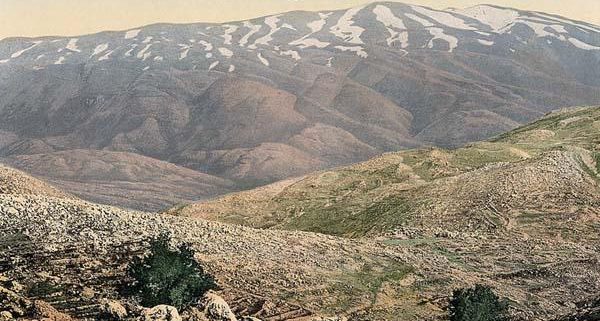
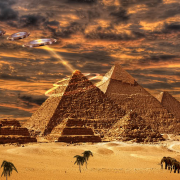



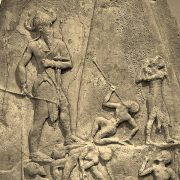
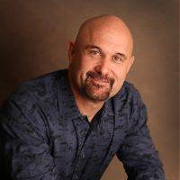
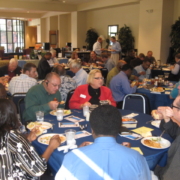




Leave a Reply
Want to join the discussion?Feel free to contribute!